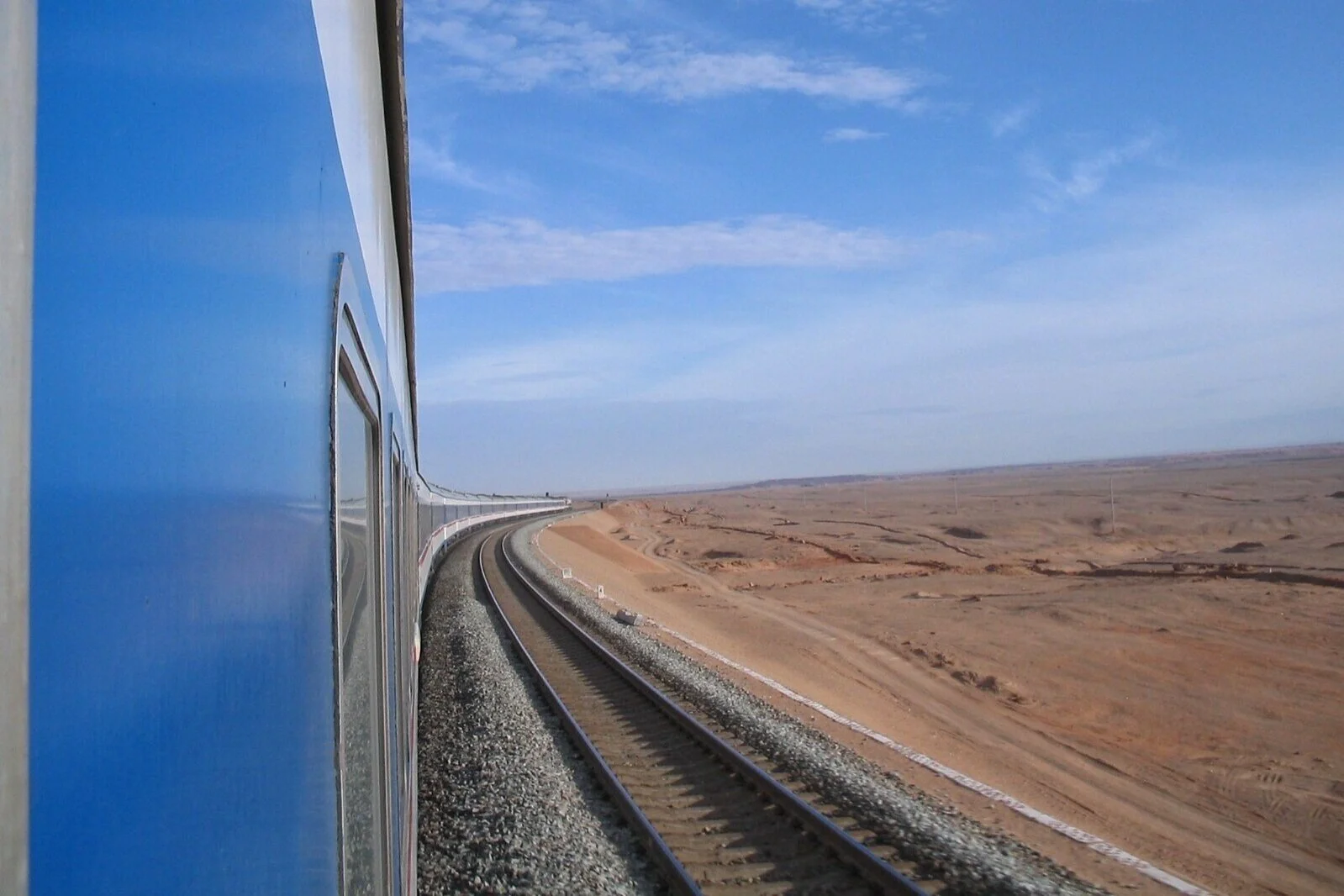In the early years of our work in China, my son Tim (who was 14 at the time) traveled with me to Xinjiang in the far west of China. Today this region is mostly closed to foreigners because of the government’s brutal repression of the Uighur people. Here is a photo taken from the train and a few excerpts from my journal during that 26-hour train ride across China’s great desert many years ago.
Crossing the Gobi Desert
The Xinjiang train rumbles along through the northern Gansu. Dusk hangs over the brown expanse that slips by, and everyone in our crowded train is settling in for the night. My bed on the top of a six-bunk compartment is coffin-like—just two feet high and wide. Fortunately, it is open at the end so my feet can stick into the aisle, which is filled with people eating strange, pungent foods. One man near me is eating something that resembles nightcrawlers and washing them down with beer. Then again, several fellow travelers were repulsed by my supper. Tim and I had made peanut butter and jelly sandwiches and were savoring every bite when we looked up to find passengers gathered around us staring with curiosity and horror at what pale people eat!
Tim is now in the next train car, probably practicing his Chinese on curious bunkmates. I’ll check on him and then try to sleep. By morning we should be in the middle of the Gobi Desert.
West of Hami, China
Reached the oasis town of Hami about nine this morning. Took advantage of the quick stop to stretch. Some men at the train station were carrying enormous melons—the Hami melon is said to be the best in China. Where there are springs in the desert, the land blossoms with rich corn, sweet melons, and bright sunflowers. But beyond the reach of water, it is bleak, barren, and boundless. The only life to be seen from the train is an occasional herd of brown camels in the brown distance tugging on some brown scrub.
